Cards In This Set
| Front | Back |
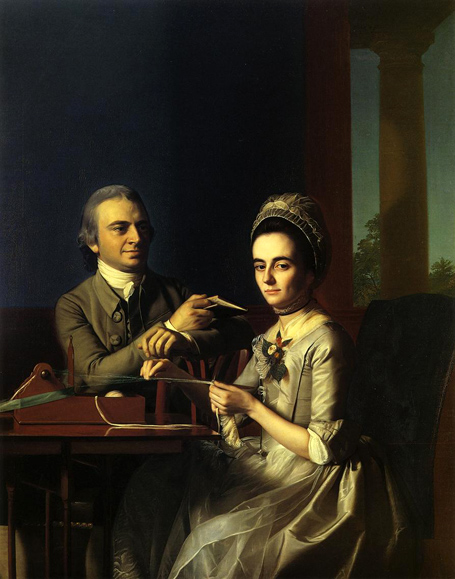 Identify |
John Singleton CopleyThomas Mifflin and Sarah Morris, 1773
double portrait focus on the foreground hand loom on the table (we can make our own goods, we do not need Britain to produce for us) husband looking at wife, wife looking out at the audience Copley- no formal training or exposure to great works, only saw prints. |
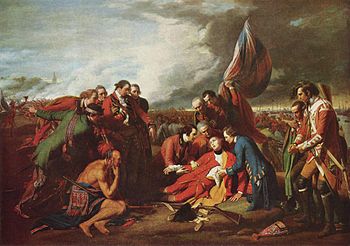 Identify |
Benjamin WestThe Death of General Wolfe, 1770
Neoclassic, painted in England Depicts the Battle of Quebec, death General Wolf. B. West was born in U.S., moves to England. President of British Academy Challenges traditional British methods. Use of contemporary dress. Wolf- depicted as a Christ-like figure, flag is the cross, surrounded by his disciples Located in North America, Native in the foreground (idea of the noble savage) |
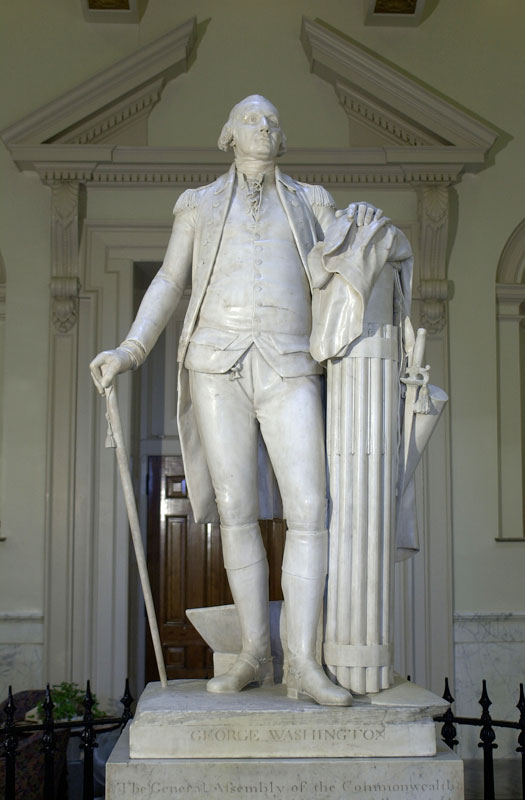 Identify |
Jean-Antoine HoudonGeorge Washington, 1788-1792 (Virginia State Capitol)Houdon was a French Sculptor
His interpretation of Washington, shaping his identity/mystique Gentlemanly dress, military allusions (general and statesman) Leaning on faucet (Roman symbol for democracy, Nationhood) Plow is also a part of the scultpure, as it shows Washington as a farmer/planter Story of Sensunatus Education for Democracy (museums serve as access to learning for the masses) |
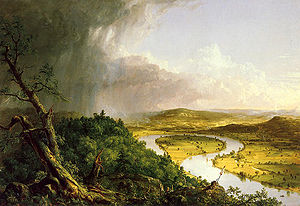 Identify |
Thomas ColeThe Oxbow, 1836
Landscape painting building American art out of America's resources, landscape is distinctly America Eden man's encroachment on nature, view from Mount Holyoke left side: wild nature (the sublime) right side: pastoral scenes (man and nature interacting) can see Cole at the bottom center, painting and observing American artists working in Europe, particularly Paris, throughout the 19th century. |
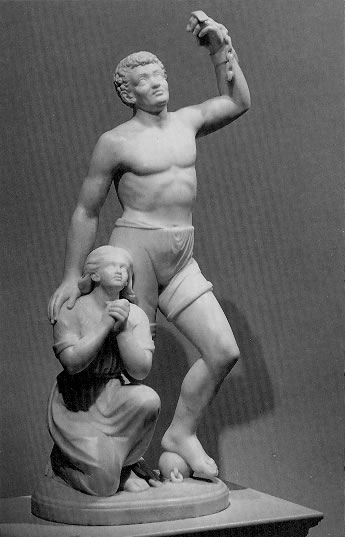 Identify |
Edmonia LewisForever Free, 1867
Emancipation for African-Americans Strong Black male figure breaking the chains of bondage. Woman seen kneeling (misogynistic depiction, or encouraging the nuclear family?) Woman appears almost white (ambigous). Artist appears to be dissociating from work. |
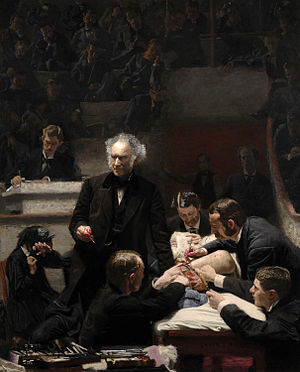 Identify |
Thomas Eakins The Gross Clinic, 1875
Thomas Eakins studied in Paris at the Academy (learned traditional foundations). "Heroes of Modern Life", figures of American life, centennial celebration surgeon, operating and lecturing (This surgeon is Dr. Gross) Looking to Velasquez's "Las Meninas" identifying surgery with artwork. |
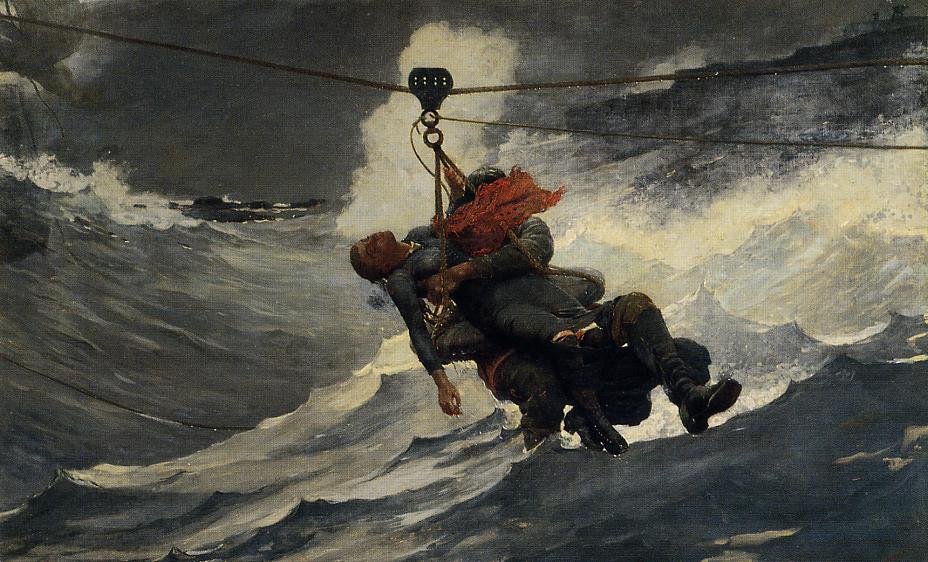 Identify |
Winslow HomerThe Life Line, 1884
Winslow Homer: relationship to nature, nature as an actor in his works. Rescue operation that he observed. Polly looks like a skull suspended over the top of the ocean. Emergence of the city as a distinctly American phenomenon. Immigration to East Coast cities. Modernism the city as a subject, gritty lower class |
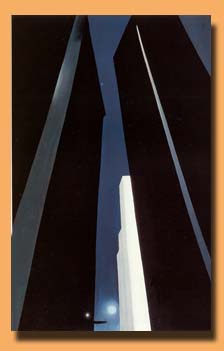 Identify |
Georgia O'Keeffe
City Night, 1926 Emergence of the city as a distinctly American phenomenon. Immigration to East Coast cities. Modernism the city as a subject, gritty lower class. City defined by the skyscraper, figureless buildings just as abstract shapes. Looking up, notion of expansion skyward. |
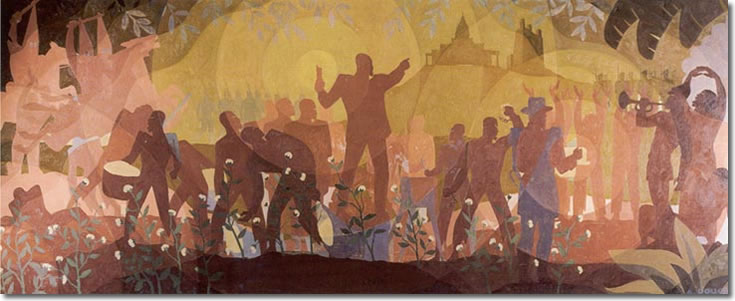 Identify |
Aaron DouglassAspects of Negro Life: From Slavery through Reconstruction (Schomburg Center for Research in Black Culture, New York Public Library, 1934)
Narrative suggestion, modernist terms Style derived from African tradition |
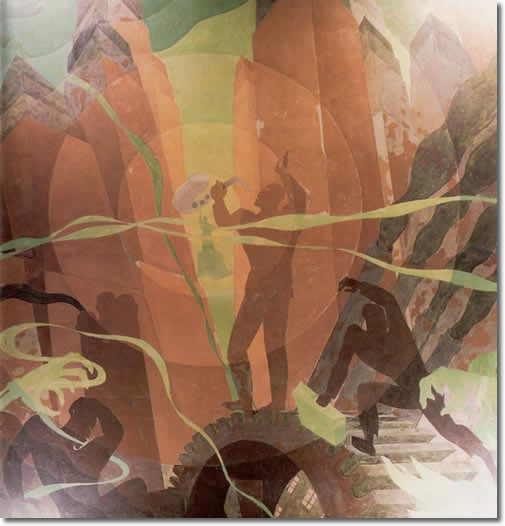 Identify |
Aaron DouglassSong of the Towers (Schomburg Center for Research in Black Culture, New York Public Library, 1934)
Same as Douglass's other work included in the flashcard set. |
|
Identify
|
Grant WoodAmerican Gothic, 1930
The influence of the Great Depression, getting back to the mythological small town America. East Coast cities as a depraved Europe. The Spirit of America, Iowa farmer and his daughter at the turn of the century. Gendering of background, house on the left, barn at right. Byzantine icon? Showing small town ways, while critiquing at the same time. |
|
An elevated style of painting popular in the eighteenth century in which the artist looked to the ancients and to the Renaissance for inspiration; for portraits as well as history painting, the artist would adopt the poses, compositions, and attitudes of Renaissance and antique models.
|
Grand Manner
|
|
The doctrine or belief prevalent in the 19th century that the U.S. had the god-given right to expand into and possess the whole of the North American continent.
|
Manifest Destiny
|
|
A realist artistic movement that came into prominence in the United States during the early twentieth century, best known for works portraying scenes of daily life in New York's poorer neighborhoods. The movement grew out of a group known as The Eight, whose only show together in 1908 created a sensation.
|
Ashcan school
|
|
An artistic and literary cultural movement that spanned the 1920s and 1930s. At the time, it was known as the "New Negro Movement", named after the 1925 anthology by Alain Locke. Though it was centered in the Harlem neighborhood of New York City, many French-speaking black writers from African and Caribbean colonies who lived in Paris were also influenced.
|
Harlem Renaissance
|



